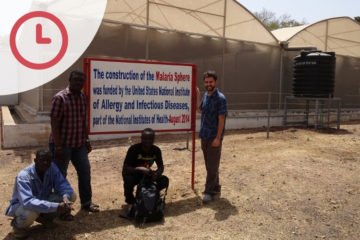Podcast Available on iTunes and Spotify.
Welcome back. Joining me today is Sally Edgar from a London-based digital agency AV Studios. They’ve worked with numerous clients in the education and public health sector over the course of 20 years, creating animations, designing websites and launching quizzes. I’m keen to know what makes a public health animation effective and, as the NHS introduces an online quiz to determine heart age, will such quizzes have a greater role in public health?
This is Five Minutes with Sally Edgar.
Sally thanks for joining me.
Thank you.
What are some of the advantages of working with animation to convey public health messages?
Because of the nature of animation, the main benefit in this particular incidence is that complex subjects can be addressed through this medium. There can be complete anonymity included so we can talk about somebody’s story and even incorporate images that would be particularly graphic, but using animation can lighten the tone but still get the message across without using an individual. As you would in a film, you’d have to blur out faces and hide voices, with an animation you can still tell the right story but not have to give individual identities away.
Would you say that animations, therefore, give you more creative freedom?
Yeah I think definitely, as I mentioned the anonymity, we get very important messages and very detailed messages across but it can be illustrated in quite a lighthearted were very receptive way. It can be adapted for different audiences in different languages. Voiceovers can be incorporated use the same information in terms of local areas but also internationally is on a global scale.
Do you believe that animations can potentially help those with low literacy levels, where posters and leaflets just aren’t effective?
Well I think they can. Obviously, they are cost effective in terms of reducing print costs and so on. One of the things that we believe makes animation so successful is this script. So the script and the message behind the animation is the key success factor to how well they are received and be adapted for different literacy levels as well. So when somebody’s being spoken to in something is it in a visual aspect rather than just giving somebody a book, or a leafler, or a document to read, an animation really tells that story and can get to the heart of the message that’s trying to come across.
What makes a public health information effective? Is it the vibrancy of colours, the duration the story line? What is the perfect recipe for a public health animation?
I think that, as I’ve just mentioned, the script is definitely the key element of a successful animation. We often say to our clients to not make it too complicated, so keep message really simple and clear. And if there is a number of different messages that you need to get across, then consider creating a series of animations, rather than trying to put everything into one specific film. Trying to keep them five minutes as an absolute maximum, we say between three or four minutes long for an idea animation, and it doesn’t have to be full of colour. We’ve mentioned before that some of the animations we’ve produced have been on like a chalkboard effect and they’ve been really effective as well. It all comes down to the script and how that is formed and how that’s put together.
And moving away slightly from animations, the NHS recently launched an online quiz to determine your heart age. Now do you think that with a struggling National Health Service and advances in technology, that we will see in the future more quizzes for public health that could be used for diagnosis?
Well, online quizzes are undoubtedly great tools for raising awareness and educating a different audiences, from professionals through to the general public at different ages as well. In terms of raising awareness of conditions and diseases and so on and how they can be treated.
Sally Edgar, thank you.
Thank you.
Sally Edgar of AV Studios.


